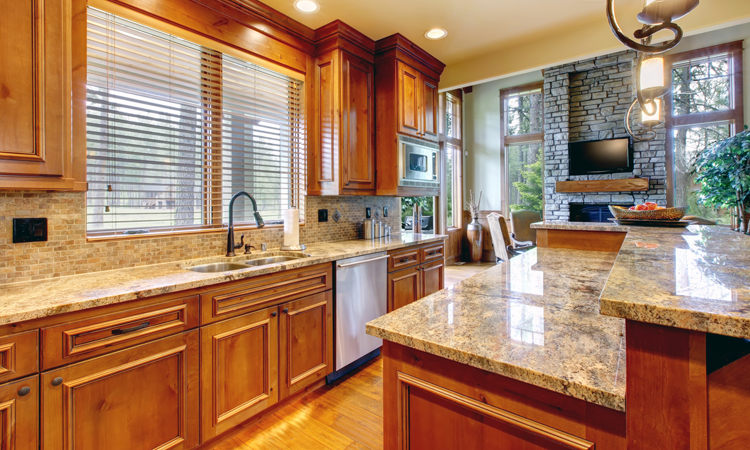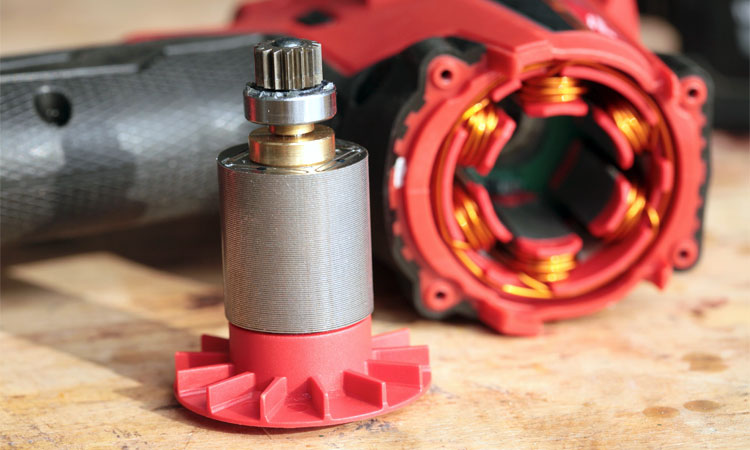Penetrating Concrete Sealers (How They Work, Innovations, and Maintenance)

This article was written and contributed by Concrete Sealers USA. They are a manufacturer and distributor of their own brand of professional grade concrete sealing products that are sold nationwide to contractors, architects, engineers, applicators and do-it-yourselfers.
Historically, penetrating sealers for concrete were not used for stain protection as they only offer partial or limited protection. The reason is that penetrating sealers do not form a film, membrane, or coating on a surface.
Instead, they penetrate or absorb into a surface, chemically react with it, and then create a new chemical solid that serves as a breathable barrier just below the top part of a surface being sealed.
While penetrating sealers can play a vital role in protecting and preserving concrete surfaces by strengthening the top part of a surface or by preserving the top part of a surface from weathering and the elements, with the top part of a surface exposed, contaminants such as motor oil can still come into direct contact with a surface treated with a penetrating sealer.
Related: Best Concrete Sealers for Garages and Driveways
With previous generations of penetrating sealers not being oleophobic (resistant to oil), motor oil could soak into a surface and still cause significant staining. As such, topical sealers or coatings were always the “go to” product for spills and stains because they create a physical barrier on top of a surface.
This barrier would block contaminants from actually coming into contact with a surface and generally prevent contaminants from absorbing into the top part of the surface which in turn does not allow stains to set in. As long as the topical sealer or coating is fairly chemically resistant, not only would the concrete surface go unstained but so, too, would the sealer or coating not leave much, if any, signs of staining.
As background, it is helpful to understand the role penetrating sealers have played and the reasons they have been most commonly used. Penetrating sealers historically came in 2 forms:
- Densifiers and hardeners such as sodium silicates, potassium silicates, lithium silicates, and, now more recently, colloidal silicas.
- Water repellents such as silanes, silane/siloxanes, and siliconates.
The primary use of densifiers and hardeners is to strengthen the top part of a surface to the depth of penetration to increase the durability, strength, and abrasion resistance of a surface. A common use is in high traffic/heavy use smooth troweled concrete surfaces found in warehouses and distribution centers.
Another use of densifiers and hardeners is as a polishing aid to harden the top part of a surface before it is subjected to the polishing process for burnished/polished concrete surfaces such as those commonly found in Big Box stores.
The main use of water repellents is to provide a degree or measure of protection against weathering issues and limiting the harmful effects of water, moisture, salts/deicing chemicals, scaling/spalling, freeze/thaw damage.
They can also help cut down on dirt build up and mold/mildew. They are used extensively in outdoor and exterior applications where topical sealers and coatings often fail or don’t hold up well due to UV degradation or by prematurely peeling and delaminating.
Advancements

These sealers are uniquely hydrophobic (repel water) and oleophobic (resistant to oil) instead of being just hydrophobic like traditional silicone based water repellents. Fluorinated sealers still only offer partial or limited protection compared to topical sealers or coatings that provide absolute or maximum protection.
But, the fluorinated sealers generally provide all the protection of silicone based penetrating water repellents with the added advantage of far greater protection against spills and stains especially from motor oil.
Contaminants like motor oil will still come into contact with a surface treated with a fluorinated penetrating sealer but they will not readily absorb into a surface because the fluorine greatly limits the penetration of the contaminant into the surface. This type of sealer offers excellent “hold out” and stain resistance, in particular, for oil and grease.
This type of concrete sealer provides reasonable opportunity to clean up accidental spills thereby eliminating most staining or at least limiting to lighter surface stains that can be pulled out with a good concrete cleaner.
Extended exposure can lead to possible staining, absorption, or surface etching so it is still important to clean ups spills as soon as possible to further lessen the chance of possible staining.
Fluorinated products like the PS100 can be 2-3 times more expensive than a standard silicone water repellent at 25-30 cents per sq. ft. vs. 10-15 cents per sq. ft. However, this type of sealer makes for a very cost effective solution when looking for some measure of stain protection compared to expensive topical coatings like epoxies that start out at $1-2 per sq. ft. for DIY kits and can go up to $5-6 per sq. ft. for professionally installed systems.
The topical coatings clearly would offer far superior protection against spills or stains than a fluorinated penetrating sealer. However, they do come with a steep cost, are difficult to install, require significant maintenance, and can prematurely fail due to peeling, chipping, and delaminating.
Applications
Fluorinated penetrating sealers like the PS100 provide best results on smooth troweled, dense surfaces like warehouse floors, garage floors, workshop floors, pole barn/shed floors, etc. The fluorinated sealer along with a tight surface work together to limit penetration of contaminants into a floor.
This is one reason why warehouse floors are tightly machine troweled to begin with as dense and tight surfaces provide a certain level of base protection prior to even applying a sealer that then affords additional protection.
See Also: Best Granite and Natural Stone Sealers
Maintenance
Since penetrating sealers like the PS100 still leave the top part of a surface exposed and do not offer a physical barrier on the top part of a surface like a topical sealer/coating, a good maintenance program is recommended to achieve best results.
Such a program would include getting at spills as soon as possible, using neutral cleaners or degreasers to attack stains right away, keeping a clean surface by periodic sweeping or hosing down a surface during the year as needed, and during winter months in cold weather climates, not using or limiting the use of salts or deicing chemicals, and squeegeeing out contaminants dragged in from roads (ex. snow, ice, slush, salts, road grit, etc.) in a timely fashion.
See Also: How to Properly Clean Oil Spills
Letting those contaminants sit on the floor for extended periods of time could lead to potential long term harm to a floor that is only partially protected from a penetrating sealer. Better care and maintenance can go a long way to avoiding harm to a floor that is otherwise easily preventable.
Common sense measures for additional protection where needed can also make a big difference in the performance and maintenance of penetrating sealers like the PS100. Such measures include using rugs/mats in higher traffic areas like entrances/exits and employing spill/containment trays or oil absorbent mats in areas where fluids are likely to leak or spill.
In areas of the country that experience extremely harsh winters, for added protection and ease of clean up, using parking mats that can be rolled out during the winter months (and rolled back up the rest of the year) and positioned over an area where the cars park can further aid in guarding a surface, especially in unheated garages, from the harmful effects of snow, ice, slush, salts, road grit, etc. that falls off vehicles after they are parked.
Contaminants are kept or contained within the parking mat and further eliminate unnecessary and avoidable harm done to a floor that is only partially protected with a penetrating sealer. The use of a garage floor mat also allows for contaminants to be more easily squeegeed away or cleaned up without leaving a messy floor.








